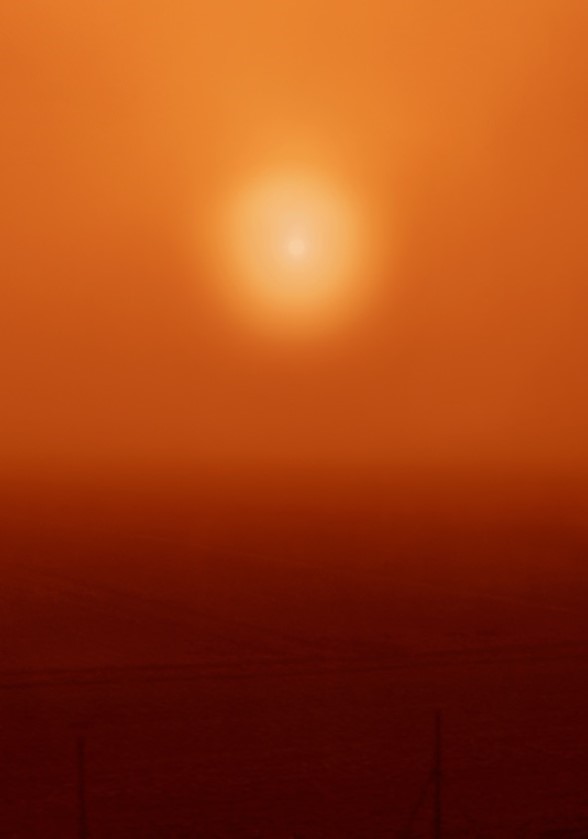The light that floods into Pellavahuone (the Linen Room) does not only enter from the two windows in this event space at Venetsia-talo (the Venice House). There is another strong light that comes from the photographs by Oona Oikkonen. Emanating from the walls and the display tables, one can see a particular arrangement of orange, red, yellow, and black hues, inviting to read the tale of a Finnish photographer exploring volcanic lands. The exhibition walls used to give shape to the laundry room in Lapinlahti, a psychiatric hospital that was operational between 1841 and 2008 and benefited from the area’s natural water source. Lapinlahden Lähde (Lapinlahti Spring) honors this engagement in the pursuit of mental health by serving as a vibrant community center that fosters social and cultural activities in Helsinki.
During a period of six months touching the years 2022 and 2023, Oona Oikkonen visited eight volcanoes. The Vesuvius being the first one to enter her eyes and Stromboli the last one to leave.
In Camera Lucida: Reflections on Photography, literary theorist and philosopher Roland Barthes identifies two elements in photography: studium and punctum. The first one allows the viewer to detect the photographer’s intentions as well as the photograph’s function, whether it be to inform, to represent, to surprise, to give meaning, or to produce desire. The second element refers to a detail in the photograph itself that provokes a strong emotion in the viewer, one that draws particular attention yet does not reveal anything about the photographer’s intentions. According to Barthes, not every photograph has a punctum.
The studium in Oikkonen’s work is found in her approach to reality. She does not encounter it with the intention to unveil a truth about it, but rather, with intuition as a means of understanding her own place in the natural world. Using photographic filters imbued with red, orange, and yellow tones, Oikkonen alters the façade of the present to show her vision of a world where natural disasters are not simply looming but rather part of a futuristic world arrangement. The blazing sun in The Aftermath and the mysterious forest in The Aftermath 03 become new, everyday elements in a planet feeling the toll of destruction. The 1883 eruption of the Krakatoa explains Oikkonen’s choice of these hues as filters in her photographs.
